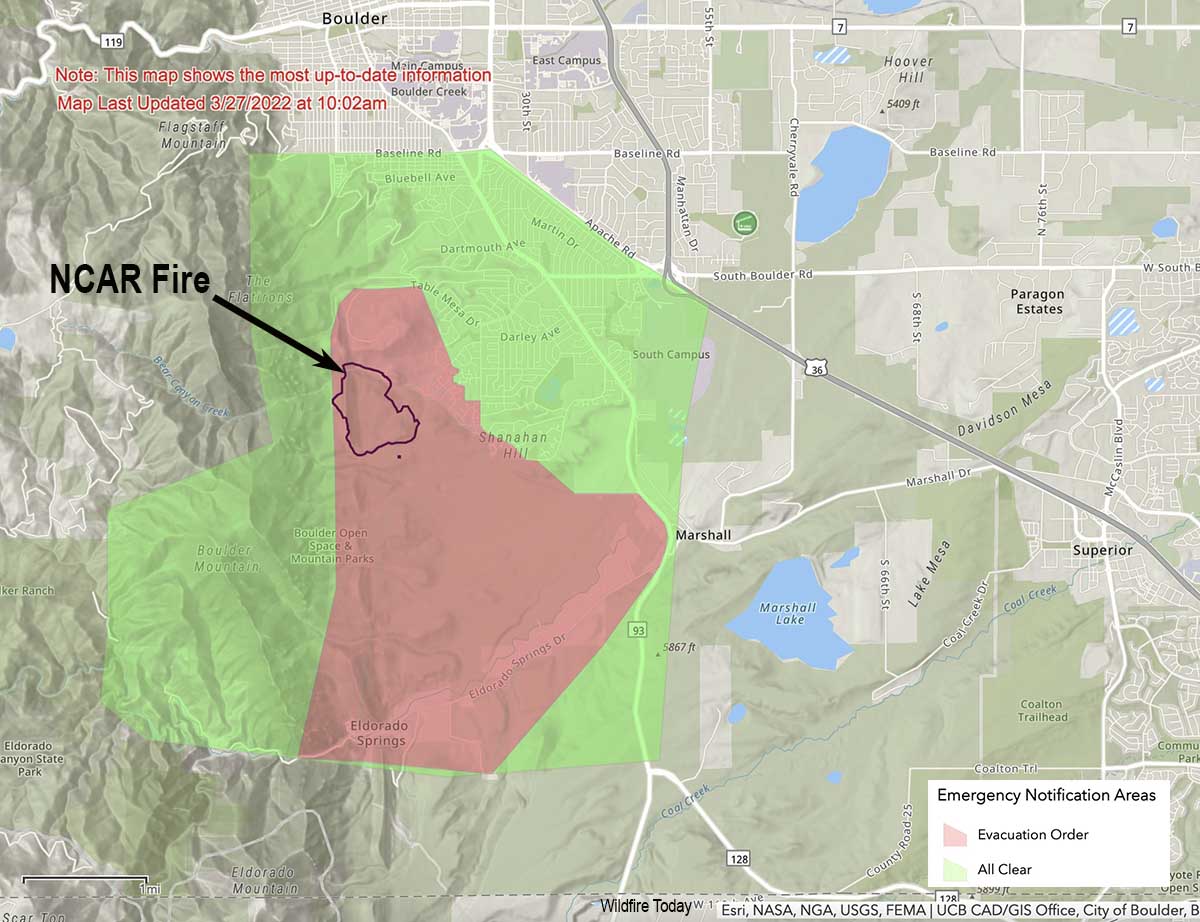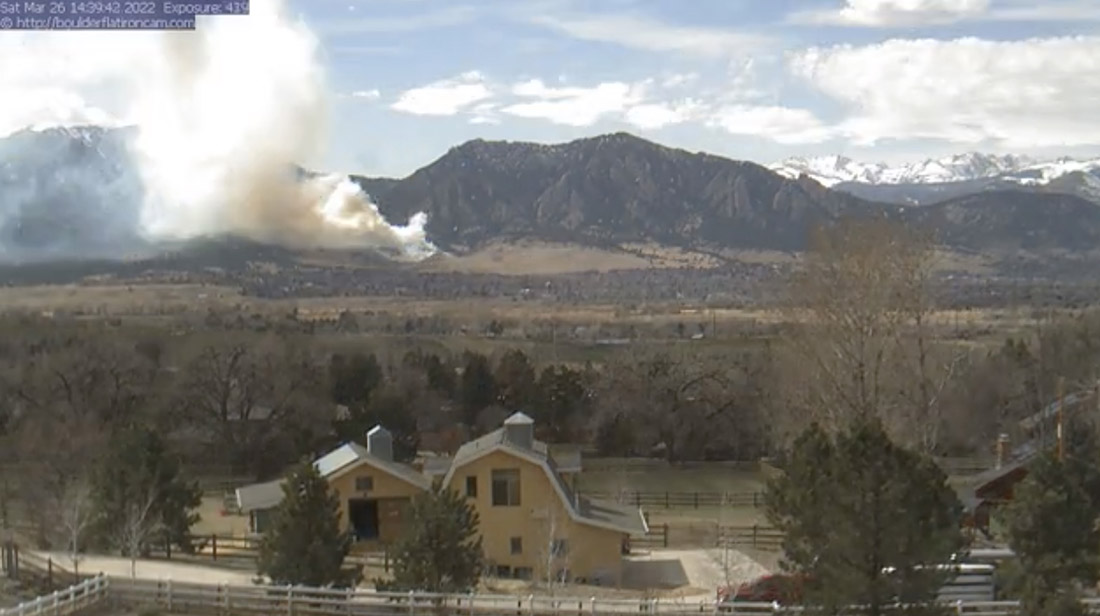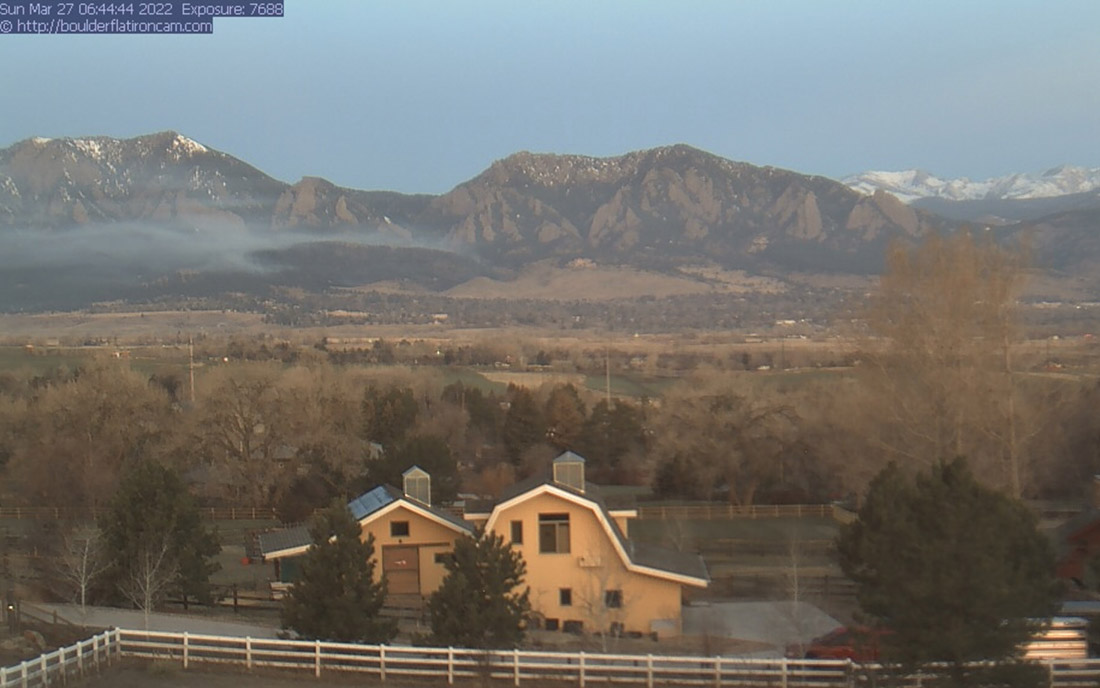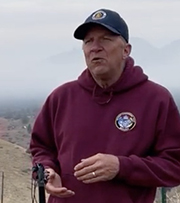10:55 a.m. MT, March 27, 2022

The NCAR Fire that started at about 2:08 Saturday afternoon on the southwest edge of Boulder, Colorado initially required the evacuation of 19,000 people and 8,000 homes. By early Sunday morning the blaze had slowed and the evacuation area had been reduced, affecting 1,629 people and 699 housing units. The fire was mapped Sunday morning at 189 acres. They are calling it 21 percent contained.

Regarding the status of the fire, Incident Commander Mike Smith of Boulder Fire Rescue said Sunday morning, “I think right now we’re in a good position. The wind speeds are nothing like they were during the Marshall Fire, we’ve got a lot of good resources in place, we have full structure protection groups as well as assets up on the hill. I think as long as the weather does what it is supposed to do today and tomorrow we’re gonna be in good shape.”
The fire came within 1,000 yards of homes on the southwest side of Boulder, but no structures have been destroyed. The incident is near the Mesa Laboratory of the National Center for Atmospheric Research (NCAR).
The Marshall Fire, pushed by winds gusting at 60 to 100 mph, on December 30 spread rapidly as it destroyed more than 1,000 homes. Most were in the city of Louisville and the town of Superior. It started about 4 miles southeast of the NCAR Fire.
Mr. Smith said there have been no injuries. The cause is under investigation but the area of origin has been identified as being on the northwest side of the fire in the Bear Canyon/Bear Creek area.

Resources available on the fire Sunday will include 110 personnel, 2 fixed wing air tankers, and one helicopter. Initially on Saturday over 200 firefighters from about 30 agencies responded.
The plan for today is to reinforce the fire line and “corral the fire up into the rocks and snow”, Mr. Smith said. The evacuation areas will be reevaluated today.

“Good planning, good prep, and a lot of good mitigation work are the reasons why we had good success today,” said Incident Commander Mike Smith. “The forecast today is for north and northwest winds which is a little less favorable [than in an earlier prediction] but the wind speeds are not that high, 15 maximum to 20. We have the plan in place to create more evacuations [if necessary], our hope is that we don’t have to do any of those.”
Some nearby water reservoirs were frozen and were not available for firefighting helicopters as a source of water, according to @mitchellbyars, a reporter with the Daily Camera.
The forecast for Monday in the fire area is for 80 degrees, very low humidity dropping to 10 percent, and light winds ranging from 5 to 12 mph out of the southwest.
The intensity of this fire in a few places was pretty high, Mr. Smith said, but for the most part it was a pretty low intensity fire. He was also the Incident Commander on the Marshall Fire.
“Between aggressive initial attack and having the aviation assets, the single engine air tankers being able to put some retardant down in between the homes was a real benefit,” said Mr. Smith.
On the Marshall Fire strong winds prevented aircraft from dropping water or retardant as homes were burning.
When asked by a reporter, “It’s been a long year — how are you feeling?” Mr. Smith replied, “It’s March but it feels like it’s November. No, we’re doing good. We’re nervous about the season coming up. When you look at the long term forecast for the upcoming season I think this is just a sign of the way things are going to go…We only have 365 fire days a year,” he said with a smile.
went on a hike … #NCARFire pic.twitter.com/9XVXKyDbZc
— Ben Holden ?????? (@benedictus_veni) March 26, 2022
These are my photos from the #NCARFire in #BoulderColorado yesterday. Hoping to share / publish them. Would you mind RT’ing? There are many more. pic.twitter.com/h3cYhKL6sD
— Elliot Whitehead (@tweetsbyelliot) March 27, 2022
